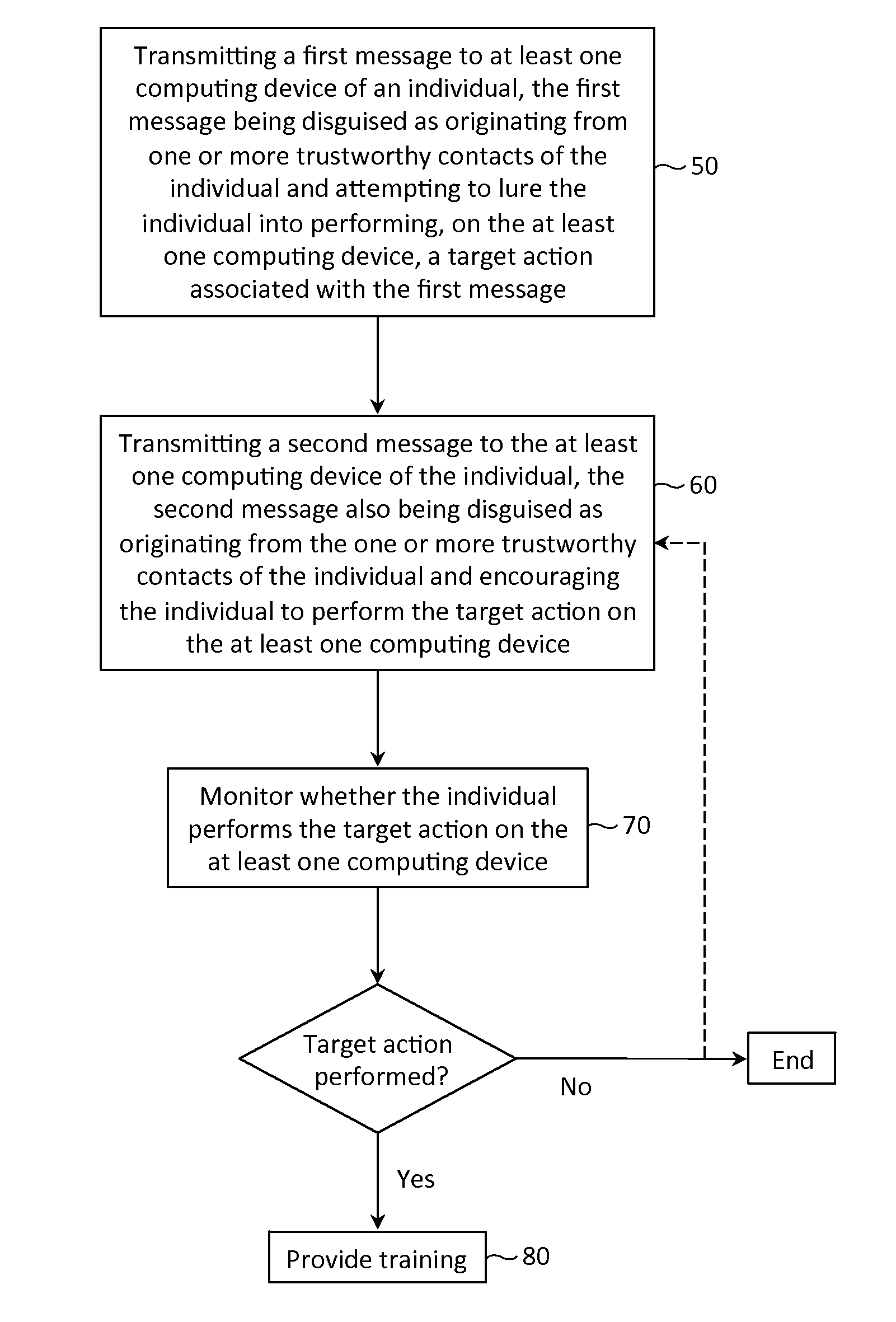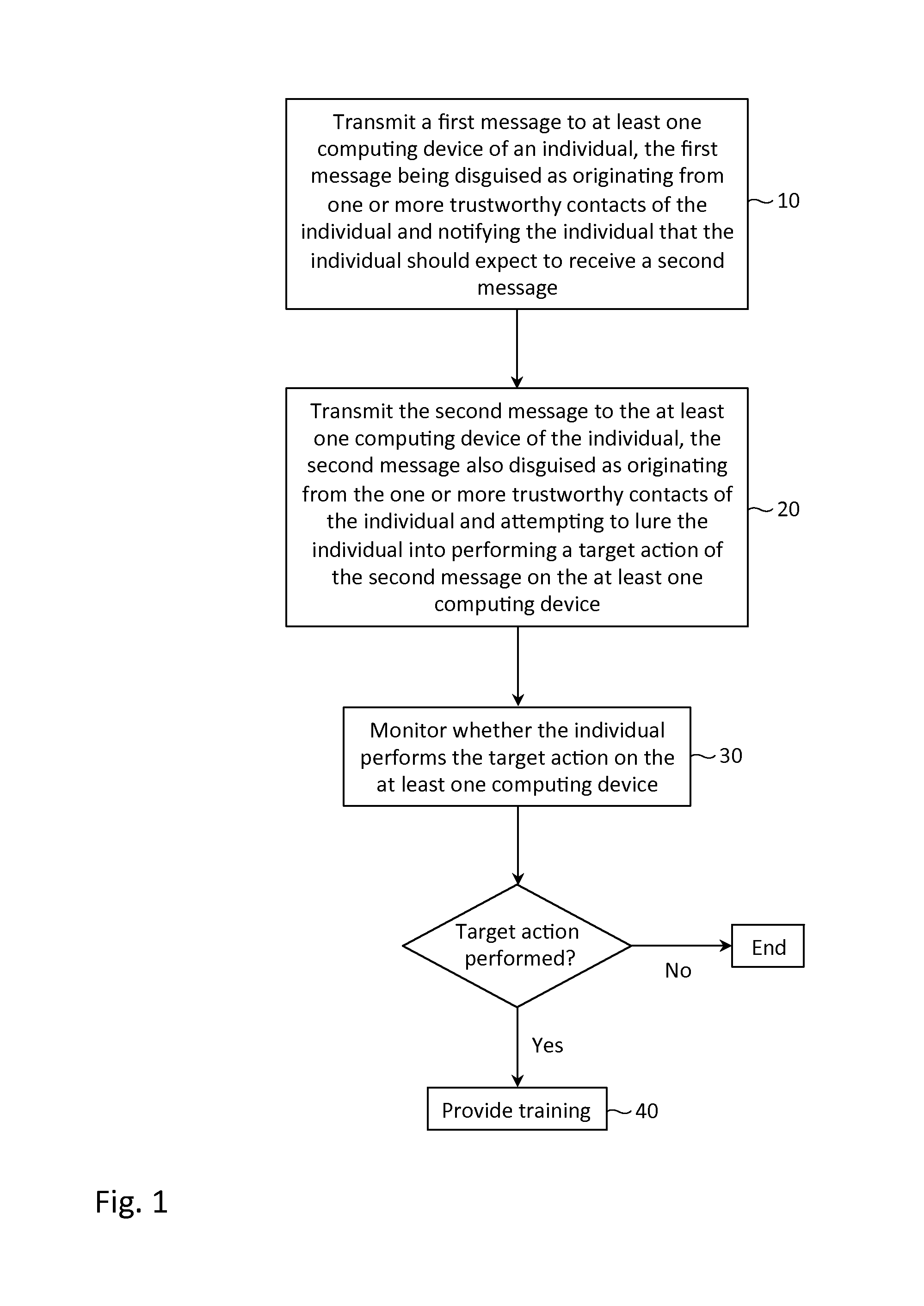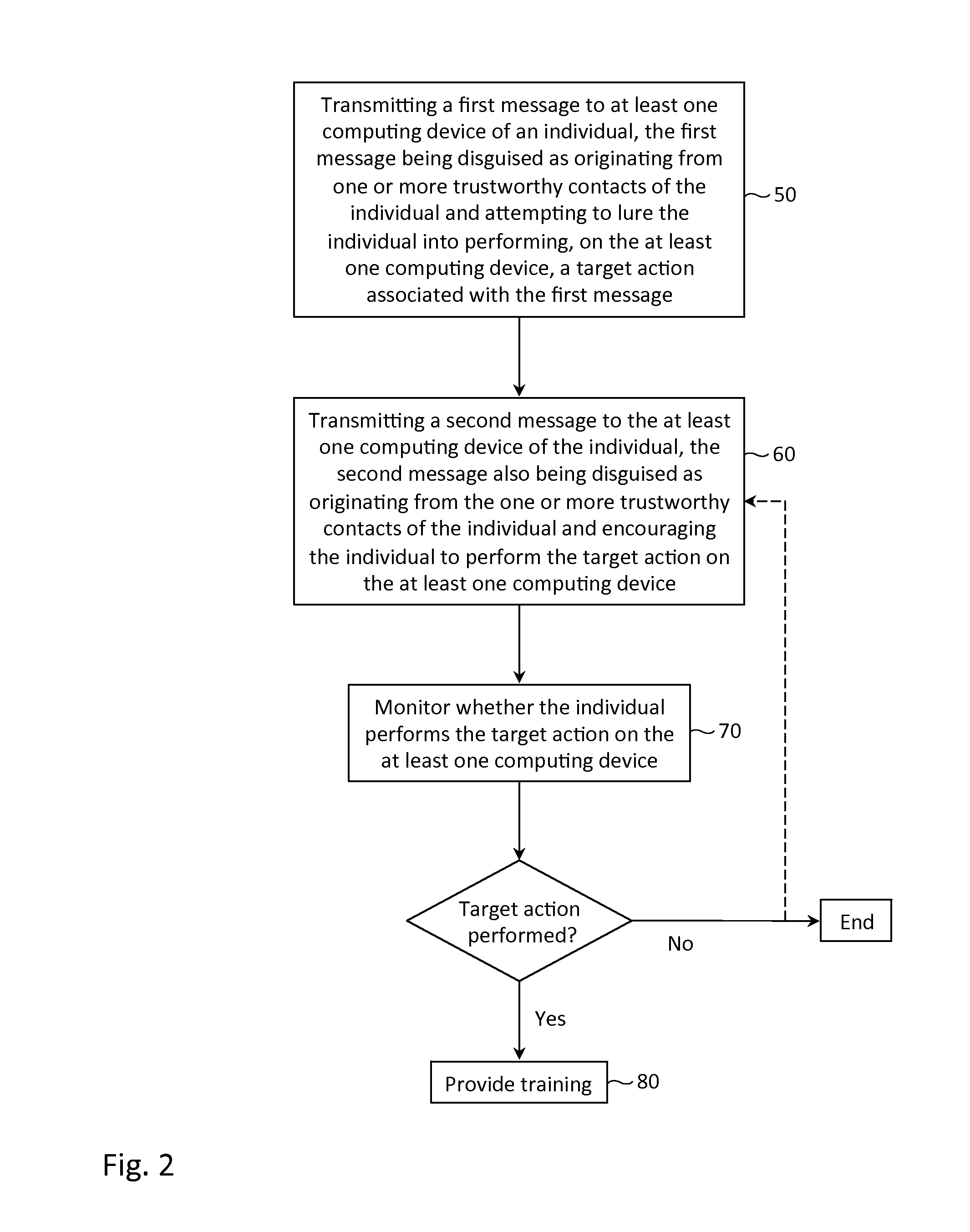Simulated phishing attack with sequential messages
a phishing attack and message technology, applied in the field of simulated phishing attacks, to achieve the effect of reducing the likelihood of phishing
- Summary
- Abstract
- Description
- Claims
- Application Information
AI Technical Summary
Benefits of technology
Problems solved by technology
Method used
Image
Examples
Embodiment Construction
[0010]In the following detailed description of the preferred embodiments, reference is made to the accompanying drawings that form a part hereof, and in which are shown by way of illustration specific embodiments in which the invention may be practiced. It is understood that other embodiments may be utilized and structural changes may be made without departing from the scope of the present invention.
[0011]The inventors have realized one effective means to counter phishing attacks is by launching simulated phishing attacks on individuals. Then, upon individuals falling prey to the simulated phishing attacks, training is immediately provided to the individuals to reduce the likelihood that they fall victim to future simulated and / or real phishing attacks and increase the likelihood that they will properly report suspected phishing attacks. The training might describe the mechanisms used by an attacker to masquerade as a trusted source (e.g., using official company logos, recalling a f...
PUM
 Login to View More
Login to View More Abstract
Description
Claims
Application Information
 Login to View More
Login to View More - R&D
- Intellectual Property
- Life Sciences
- Materials
- Tech Scout
- Unparalleled Data Quality
- Higher Quality Content
- 60% Fewer Hallucinations
Browse by: Latest US Patents, China's latest patents, Technical Efficacy Thesaurus, Application Domain, Technology Topic, Popular Technical Reports.
© 2025 PatSnap. All rights reserved.Legal|Privacy policy|Modern Slavery Act Transparency Statement|Sitemap|About US| Contact US: help@patsnap.com



